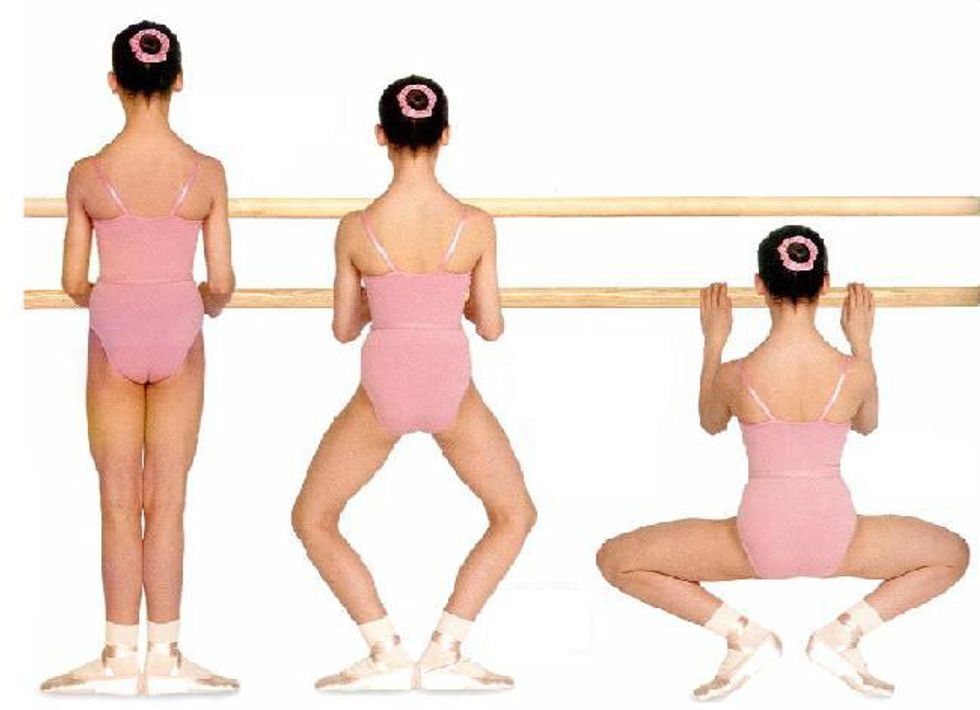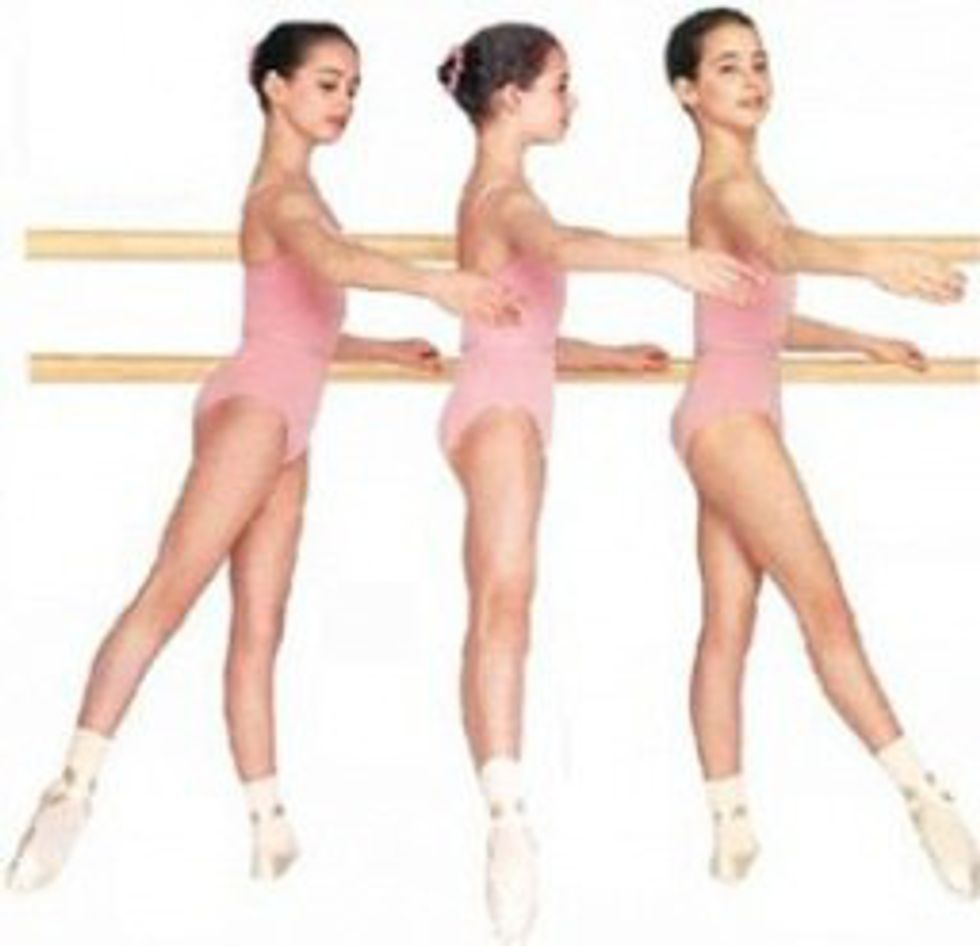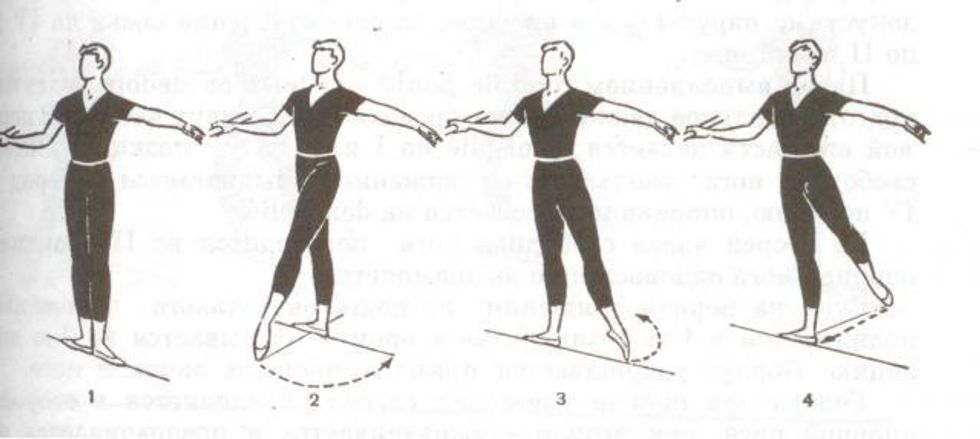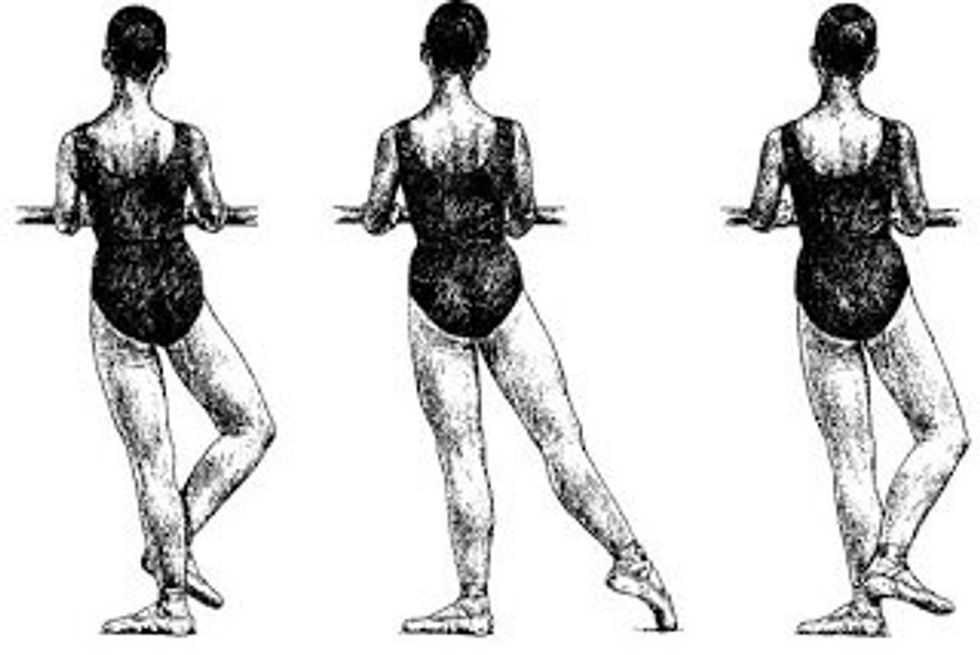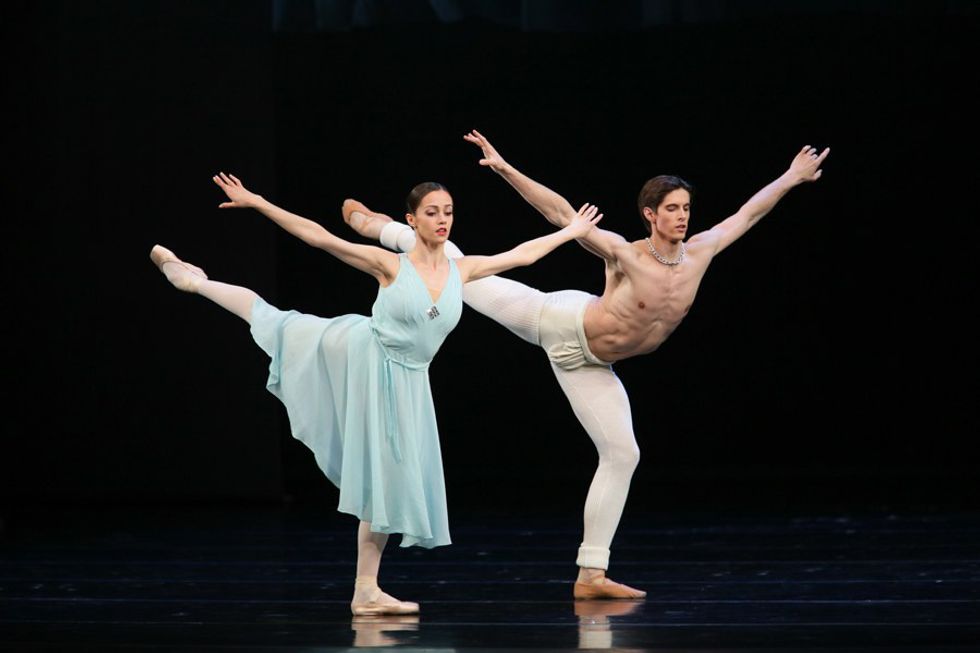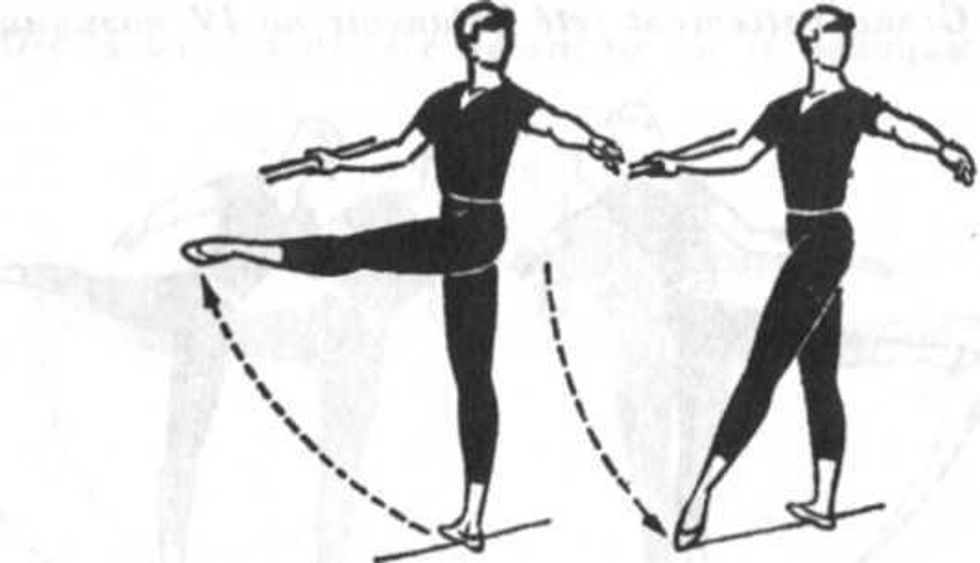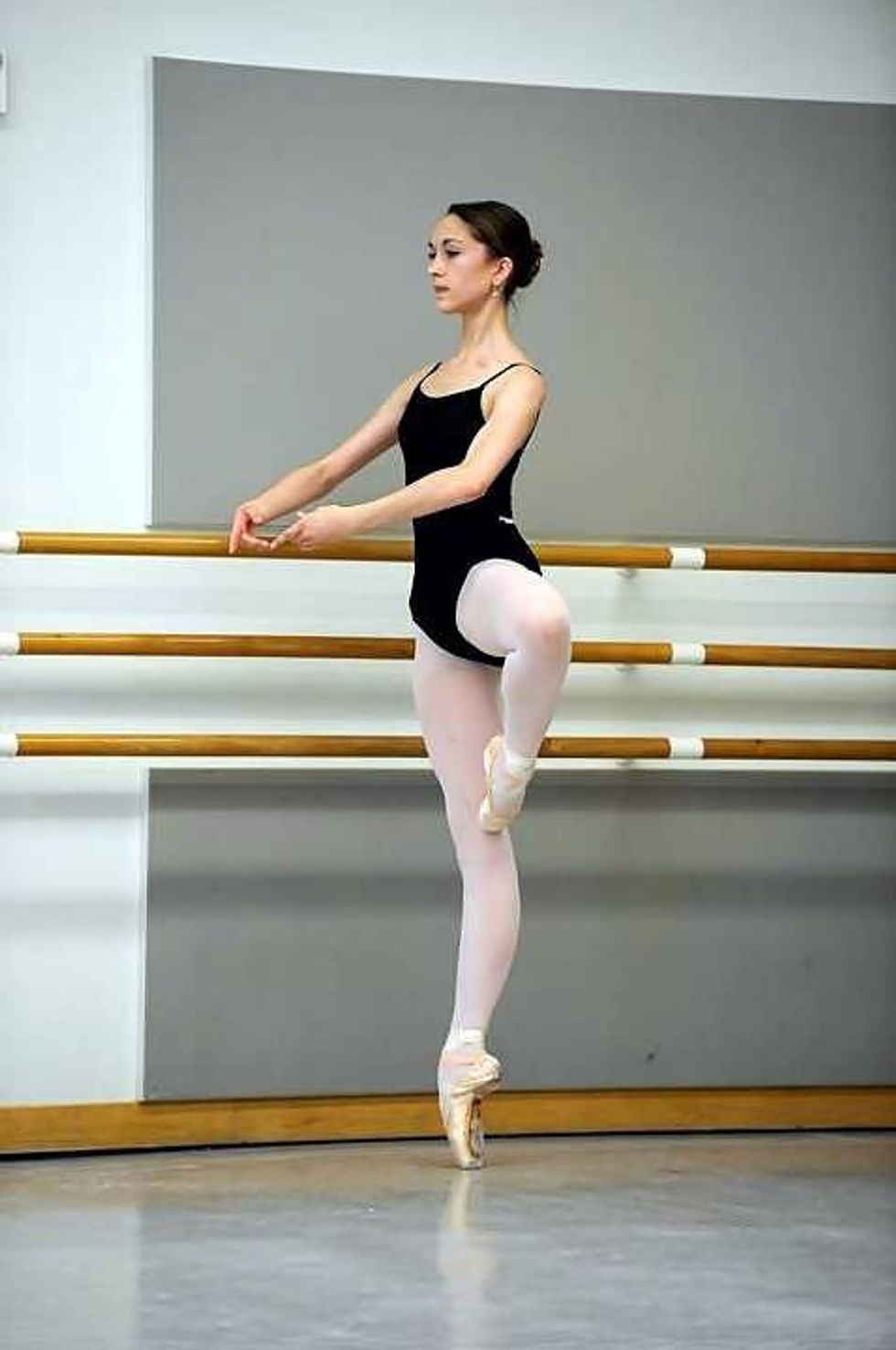Knowing ballet terminology can help better understand the movement or movement quality that you should be doing. Here is part one of ballet vocabulary: Basic Barre Terms.
1. Plié
Plié means to bend or bending. This is the bending of the knees. Demi means half (demi plié), and grande means big or large (grande plié). Demi pliés are performed with the heels on the ground and the knees going directly over the toes. Pliés are done to increase a dancers hip flexibility, balance and strength to prepare for jumps and other complex steps.
2. Tendu
Tendu means stretched. Tendus can be performed devant (to the front), a la seconde (to the second) or derriere (to the back). Tendus are done with a straight leg, pointed toes and stay on the ground. Each tendu should lead with the toes or the heel and always go through demi pointe before fulling stretching the foot.
3. Dégagé
Dégagé means disengaged or to disengage. They are performed in the same front, side and back positions as tendu. However, dégagé is slightly off the floor or en l'air (in the air). Dégagés do not transfer weight.
4. Rond de Jambe
Rond de Jambe means round of the leg. Generally, they create a half circle. Rond de jambes can be performed in several ways, including en dehors (outwards), en dedans (inwards), en l'air (in the air) and à terre (on the ground). The dancers hips and body should remain stable during rond de jambes.
5. Frappé
Frappé means struck or to strike. There are several ways to do a frappé including from a flexed foot, pointed foot or through demi pointe. The foot usually starts in cou-de-pied (neck of the foot) and extends out to a dégagé or tendu position, after striking the floor. The image below is shown with a flexed foot.
6. Fondu
Fondu, like cheese and chocolate, means to melt or to sink down. Saint Leon once wrote, "Fondu is on one leg, what plié is on two."
7. Adagio
Adagio is derived from the Italian word, ad agio, meaning at ease or leisure. Generally, dancers find adagio difficult due to the slow movements and muscle control that is required. The leg is usually en l'air (in the air) and is slow and controlled. Adagio is also usually the first thing performed in a pas de duex (step of two).
8. Grand Battement
Grand battement means large beating, in other words a kick. A grand battement is performed with straight legs and of course, pointed feet. They can be done devant, a la seconde and derriere. They should be controlled on the way up and back down. The weight should stay in the ball of the foot on the supporting leg, which should also remain straight as well. The body of the dancer should stay stable with the hips square. The body should not drop when doing them to the back.
9. Port de Bras
Port de bras means carriage of the arms. This is how a dancer moves their arms through the positions. Check out the Ballet Bulletin "Improving Port de Bras" for more information.
10. Passe
Passe means passed. Another word often used and confused with passe is retiré. Passe simply passes from front to back or vice versa. Retiré means withdrawn. Retiré simply brings the leg up and does not pass from front to back or back to front. In both, hips and shoulders should remain square. Dancers should avoid resting in this position as they should be pulling up through the inner thigh. These can be done in front of the knee, to the side of the knee and to the back. Most pirouttes are performed with the foot in front of the knee. Most pique turns are done with the foot behind the knee.




